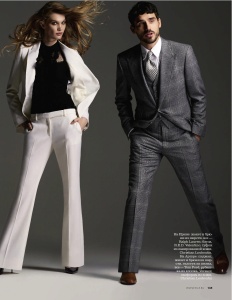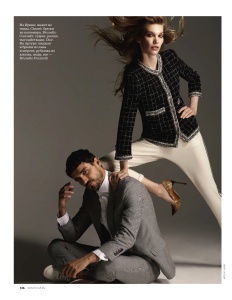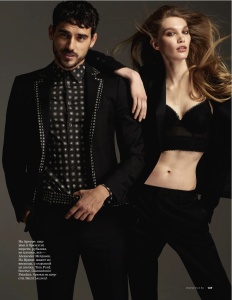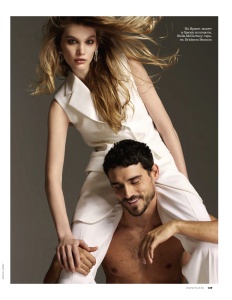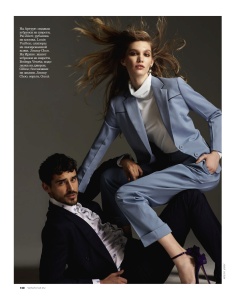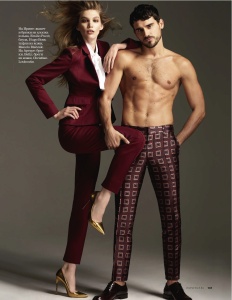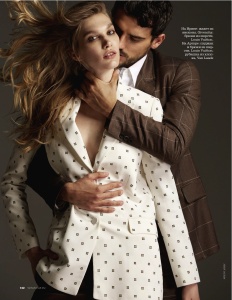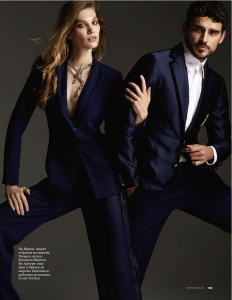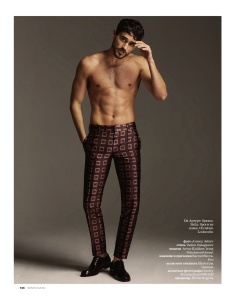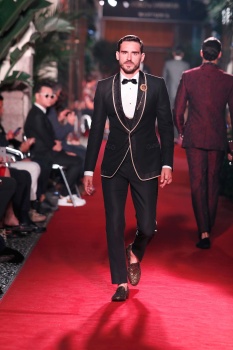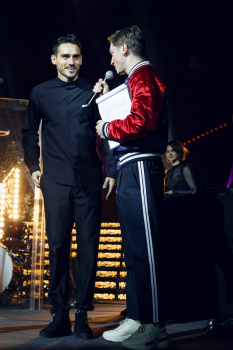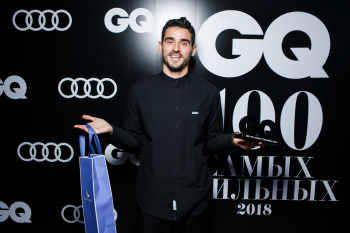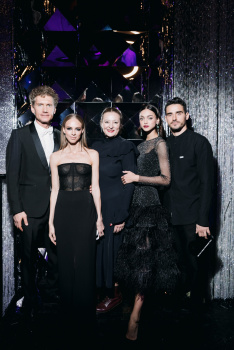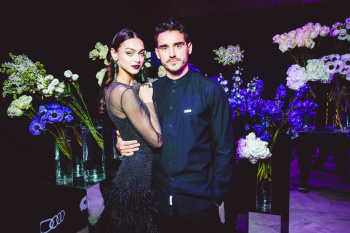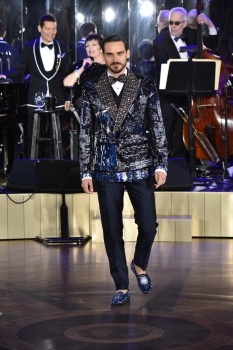-
Announcing... The 3rd annual theFashionSpot Awards for 2025. Vote NOW via the links below:
Designer of the Year
Ready-to-Wear Collection of the Year
Haute Couture Collection of the Year
Model of the Year
Photographer of the Year
Stylist of the Year
Magazine Cover of the Year
Ad Campaign of the Year
Thank you for participating!
VOTING WILL CLOSE 30/12/2025 EOD!
You are using an out of date browser. It may not display this or other websites correctly.
You should upgrade or use an alternative browser.
You should upgrade or use an alternative browser.
Arthur Kulkov
- Thread starter Flashbang
- Start date
RedSmokeRise
Well-Known Member
- Joined
- May 31, 2015
- Messages
- 1,743
- Reaction score
- 1,145
ThatDudeOverTher
Well-Known Member
- Joined
- Jul 3, 2017
- Messages
- 237
- Reaction score
- 190
Arthur Kulkov Goes From Fashion Star to Footwear Entrepreneur
– By Khahlil Louisy
Arthur Kulkov, who has appeared in numerous advertising campaigns for major global brands like Tommy Hilfiger, Dolce & Gabbana, and H&M, arrived in our West Chelsea office, visibly excited and anxious. He explains that he is expecting a shipment of shoes to arrive from Portugal. This is the first shipment of product for his new brand, Between Rivers and it made sense why he was feeling anxious. The runway veteran and fashion star was embarking on the sinuous journey of entrepreneurship.
We chat amiably about the business of fashion, the changes in the industry, and what he has planned for the brand. I can tell that Between Rivers isn’t just a vanity project for Arthur, but something that he is passionate about. He converses easily, hitting on touchstone points like the importance of being “on brand.” His knowledge of branding would later be exhibited, when we talked about styling him for the shoot. He didn’t want to look too “fashion,” but instead wanted whatever outfit he wore, to be reflective of his style and the spirit of the brand that he is trying to build – an amalgam of put-together street style and modern classics.
A true test of our mettle for entrepreneurship would present itself as our shoot got underway, when a garment bag containing designer samples and new pair of shoes from Between Rivers, vanished from the outdoor set. Panic ensued as the team mobilized to locate the bag. Arthur remained calm, assisting in the recovery efforts, and looking around to see which building may have security cameras, that may have picked up the theft. His ability to remain calm and assess a situation before taking next steps will surely serve him well in his new role, as an entrepreneur. Fortunately for us, we had the chance to photograph one look.
Below is a conversation with Arthur, which has been edited and condensed for publication.
Where did you come from before moving to New York City?
I was born in Russia in a little town in Siberia called Mezhdurechensk. My town has about 100,000 people, mostly full of coal miners or other people somehow related to coal mining.
And you moved to New York at what age?
At the age of 13, I moved with my mom to the Coney Island area of Brooklyn, which was like night and day compared to Mezhdurechensk.
How did you start modeling?
When I was 18, I was approached in college to try modeling, which wasn’t what I wanted to do. But after one scout approached me repeatedly, I considered giving it a try. So, for about four years, I was modeling part-time when I could after school and after soccer practices. When I graduated in 2005, I decided to give a try to working full-time in this so-called posing business.
How have you seen the industry evolve since you started working?
Well, obviously, the industry has grown in different ways. For one, when I started, there were no social media outlets to show yourself. To become a model, you had to figure it out somehow, some way. Nowadays, you can be in Alaska with an internet connection and have the full advantage of showing yourself however you want and to anyone in the world—including scouts, agents and whoever else. But also in this digital world, it’s very easy to hide or confuse at the same time. People might not be what they are in-person, compared to what they look like on social media. To me, I guess this industry has lost its ‘private club’ association. Now, there are tricks to get into it.
Why did you make the decision to go into business and a fashion business, at that?
Well, there are many reasons. After 15 years of standing in front of a camera, this fashion business became natural to me. It became easy, not challenging enough—but it also became a coaching tool in aspects of how to create an image, understanding what looks good and what doesn’t. After working with people like Jim Moore, George Cortina, and Karl Templer; photographers like David Armstrong, Steven Klein, Peter Lindbergh, Carter Smith, Peggy Sirota, and more; to be in the company of designers like Dolce & Gabbana, Giorgio Armani, Dean and Dan Caten, and Tommy Hilfiger—you get to learn just by being around these people. I felt like I had learned enough to try to create my own brand, my own identity, and I also felt like I had a lot to offer and learn.
Have you experienced any challenges as a start-up?
Oh, I don’t even know where to start! For one, no one takes you seriously until you have the physical product. And not just the product, but also some sort of thing which can hold its own weight in an industry of millions. Dealing with factories to turn your dreams into reality, coming up with a good amount of money to support all that and more, the logistics of it all, dealing with people that are trying to capitalize on you either making a mistake or just not being familiar with certain things—I mean, I’m still dealing with a lot of surprises that are behind each corner of this venture and I know that there are many more to come. I hope it won’t stop other people from chasing their goals, dreams, and obsessions after reading this.
What is your overview of the industry currently?
Well, I’m not creating a wheel here. I’m in a industry that has been striving for years. Is making shoes the hardest? I’d say yes. Is it easier to make pants and shirts? I’d say yes. My overview of the industry is really irrelevant to me or others. I know what I want. I know what this brand needs to look like in my eyes to make me happy. Am I gonna follow the trends because someone else said so via Instagram or some fashion blog? Nah, I’m gonna do it my way—minimalist and simple.
So we have this match between digital influencers versus traditional editorial and advertising mediums, what do you think of this disruption?
It’s a catch-22. The powers of some of these influencers are so big that at some point, you think to yourself—with so many followers and non stop growth, these influencers can put a pile of **** on his or her head, add some filters on it, retouch it, and live-stream it, and say it’s cool. And millions of followers would actually find it cool.
These people hold so much weight that you have to be careful about the information you get from them and which you let them keep. I think influencers have the younger generation on lock, which is the future, like it or not. In my opinion, you have to filter mostly everything and take only what makes you or your brand better. With traditional advertising, you do the same because not everything that comes through those channels can be good or helpful. If I want the grown-up point of view from people that have been in the industry for years, then, yes, traditional is the way to go. But in my opinion, we need to mix it up.
What was the process like, creating a brand identity for between rivers?
The name was created based on where my upbringings were. As I said before, I was born in the little town of Mezhdurechensk, which translates to ‘between rivers.’ And then I moved to the city of New York, which is also located between two rivers in a way—Manhattan island, that is.
Visually, simplicity, and understatement, yet departure from the mundane, were the guiding principles of the BR brand identity. With respect to the product, it transcended into asymmetrical sharp lines, and in the case of the trainers, aggressive architectural sole design. Growing up in the Soviet Union and the early days of post-Soviet Russia, a personal aesthetic, to common folk, was an afterthought. Just about everything, from cars on the streets to buildings, had very hard, utilitarian edges to it as remnants of a communist regime. I didn’t want to make a literal connection to that time, but rather bring some cues into the visual language.
Will you be exploring other product categories and can you touch on growth strategy for the brand?
I see a big opportunity in the space between the high-end fashion houses and the ever growing direct-to-consumer (DTC) sector. Luxury brands offer a great narrative but at very aspirational prices, while a majority of DTC brands offer well-made commodities and products at a good price, but without a particular voice and attitude. We are positioning ourselves somewhere in the middle.
Organic growth is the key. We want to go slowly and easily and build the brand equity—starting with men’s and women’s footwear for now, with goals to become a full lifestyle brand in the near future. There are a lot of ideas, but we need to learn how to crawl before we can run.
Who is the intended demographic for between rivers?
Myself and like-minded people who appreciate a beautiful and different aesthetic. This is a personal passion, so I am at liberty to say that. Speaking in less romantic language, it is the 27 to 40 year old crowd who seeks unique, simple designs with an edge, and great craftsmanship.
What do you have to say to other new entrepreneurs in the fashion space?
I’d say I’m a big time realist in life and business. I don’t sugarcoat much to people or to myself. A lot of people say, “Oh, I’m dreaming of doing this and that. My dreams are so cool and great.” But what I can say about that is, “when you dream, you sleep. If you sleep, you ain’t doing work. If you ain’t doing work, you ain’t coming closer to your goal.”
I tell people to set out a goal, not a dream, and step-by-step organically get to it. Get ready to work and get dirty in unknown **** and unknown territory. Prepare yourself for early morning wake ups, prepare yourself for stress you haven’t experienced before, prepare yourself to maybe cry yourself to sleep—if you even get any sleep at that point. Business school did not teach me most of this ****, and I’d say that no school in the world will. You will make mistakes. And it’s ok.
It’s funny, I say all these experiences literally from like a last year window. To this day, it’s not like my brand has existed for a number of years. I still question myself daily and I’m still not sure where it’s gonna be in two, three, or five years from now. The brand is new. It all still happens to me as we speak, and I don’t intend for it to stop. My business is just about a year old, with many more surprises ahead.
We know that entrepreneurship can be rough and incredibly tiring. How do you unwind and relax when not working?
My only relaxation time is at the gym, playing soccer, or hitting the heavy bag. I need to sweat, and I need to compete to get other things out of my mind.
Any favorite activities to engage in, in NYC?
Right now, it’s probably going to the beach in Coney Island to work out with friends, going to the park, and BBQs with friends.
How would you describe your personal style?
I think I have a mixture of young and hip, classy and a mature look. It depends on the time of day and the day of the week. One minute I can have tight dress pants on with some dress shoes and another minute I can be in sweatpants or shorts and sneakers. Like I said, I mix and match or don’t match!
Any favorite product for grooming and skincare?
Haha, I don’t have any favorites and I’m not a big product wearer. I use whatever I find laying around.
Arthur Kulkov was photographed by Mark Grgurich and styled by Khahlil Louisy in a knitted sweatshirt from Kinross Cashmere, ASOS pant, and Between Rivers shoes. Grooming by Maiko Ando.
Images from the article:



Source: bonneny.com
Last edited by a moderator:
Leonardo
Well-Known Member
- Joined
- Aug 19, 2005
- Messages
- 10,200
- Reaction score
- 137
Vogue Hombre - Spring/Summer 2018
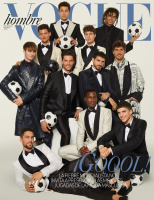

Editorial: "Inicia El Juego"
Photographer: Daniel Clavero
Stylist: Angelo DeSanto
Hair: David Colvin
Make Up: Bo Satayakul
Models: Arthur Kulkov, Aurelien Muller, Austin Mahone, Ben Allen, David Agbodji, Evandro Soldati, Garrett Neff, Juanpa Zurita, Mateo Videla, Roberto Rossellini and Tobias Sorensen

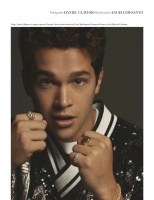
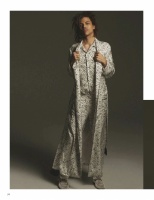

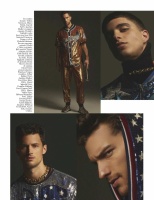

Vogue Mexico Digital Edition


Editorial: "Inicia El Juego"
Photographer: Daniel Clavero
Stylist: Angelo DeSanto
Hair: David Colvin
Make Up: Bo Satayakul
Models: Arthur Kulkov, Aurelien Muller, Austin Mahone, Ben Allen, David Agbodji, Evandro Soldati, Garrett Neff, Juanpa Zurita, Mateo Videla, Roberto Rossellini and Tobias Sorensen






Vogue Mexico Digital Edition
Similar Threads
Users who are viewing this thread
Total: 1 (members: 0, guests: 1)












































